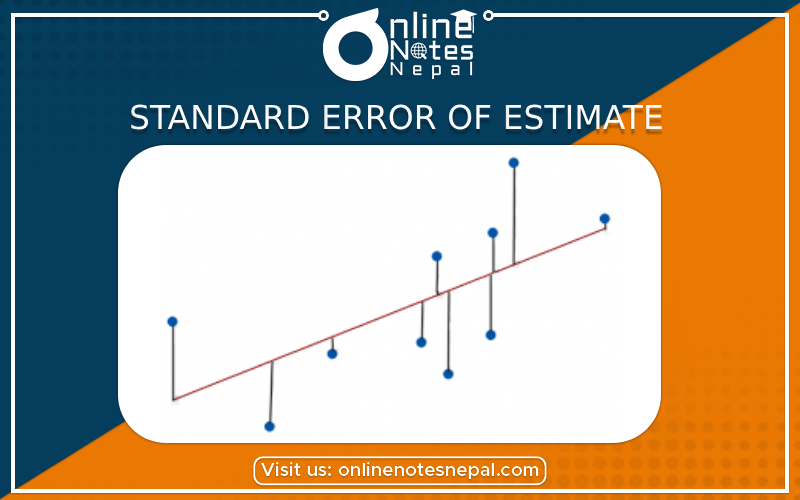Published by: Dikshya
Published date: 23 Jul 2023

Title: Standard Error of Estimate
Definition: The Standard Error of Estimate (SEE), also known as the Root Mean Square Error (RMSE) or the Root Mean Square Deviation (RMSD), is a statistical measure that quantifies the accuracy of predictions made by a regression model. It represents the average amount by which the actual values differ from the predicted values, providing an estimation of the model's predictive performance.
Calculation: The standard error of estimate is computed using the following formula:
SEE = √(Σ(y - ȳ)² / (n - k - 1))
where:
Interpretation:
Smaller SEE: A smaller standard error of estimate indicates that the regression model's predictions are generally closer to the actual values, suggesting a better fit and higher accuracy.
Larger SEE: Conversely, a larger standard error of estimate indicates that the model's predictions are more spread out from the actual values, implying lower accuracy and a poorer fit.
Uses:
Model Evaluation: The SEE is a valuable tool for evaluating the performance of regression models. Comparing the SEE of different models helps in selecting the one with the best predictive ability.
Error Estimation: The SEE can be used to estimate the likely range within which future data points may lie, providing insight into the reliability of predictions.
Outlier Detection: Unusually large residuals (differences between predicted and observed values) may indicate the presence of outliers or influential data points.
Limitations:
Dependent on Sample Size: Smaller sample sizes can lead to more substantial fluctuations in the SEE, making it less reliable as a predictive performance measure.
Influenced by Outliers: Outliers can significantly impact the SEE, potentially leading to an overestimation or underestimation of the model's predictive accuracy.
Assumes Normality: The SEE assumes that the errors between predicted and observed values follow a normal distribution.
Conclusion: The Standard Error of Estimate is a fundamental metric in regression analysis that quantifies the accuracy of a model's predictions. By assessing the deviations between predicted and actual values, it provides valuable insights into the model's performance and helps researchers and analysts make informed decisions regarding the validity and usefulness of the regression model.